1.
If in fact it was born, it is not; nor can it be if it will ever be in the future.
So birth vanished and death waned.
Nor is it divisible since the whole stays identical to itself [1]

Fig.1. What does fig.1 represent?
It could be: the aerial view of a cup of black coffee / a cross-section of a pencil lead / a black rubber ball / a hole / an iris / a solar eclipse / a minimal beer mat / a polka dot
Or it could be the sphere of Being.
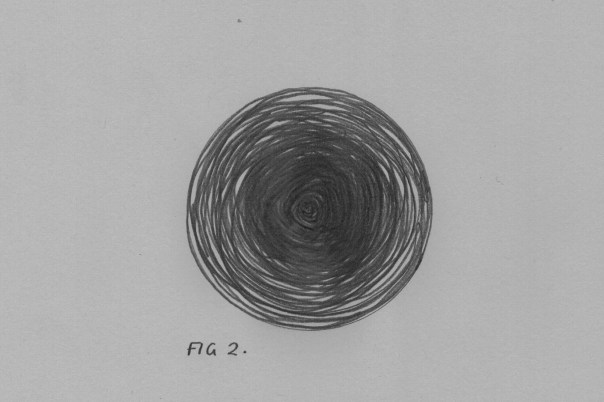
Fig. 2 looks a lot like the drawings that permeate the Japanese horror film Ringu (American version, titled The Ring, directed by Gore Verbinski and starring Naomi Watts, later made in 2002, this is the only one you saw in fact, it was so terrifying you never mustered the courage to watch the Japanese original).
But it could be the void of non-Being.
See how I have capitalised Being? This is not a mistake. Being and being are different. Fig. 3-4 represent being:

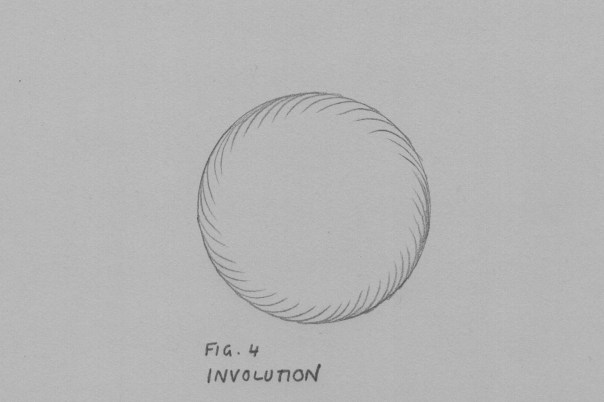
which is being as becoming.
Being that is with a capital B at all times – even when not at the start of a sentence – does not change, it is the ultimate mode of Existence, whose perfection can be likened to a sphere. There is no change, there is no temporal dimension to Being. No start or beginning.
>>The thing about the sphere is, nothing is superior or inferior, nothing is the end or the beginning, you roll it around a bit and the top becomes the bottom because it’s all the same.
Parmenides:
It is thus complete entirety of continuity,
[…]
And again since there is an ultimate limit
it is accomplished
like a well- rounded sphere [1]
Here in this particular translation there is the particular nugget of joy with the use of well-rounded. This term almost entirely encompasses everything about notions of Being as round. And look, there I go again, with the use of the word encompasses: what does a compass do but draw a circle?* How lovely.
*Lacking a compass myself, fig.1-11 were in fact made by drawing around a shot glass.
2.
-So what’s your favourite book?
-Oh God, I don’t know, this will change in three minutes, I always like what I’ve just read I guess.
Wrong answer, a lie, I have two favourite books. But I am on a first date with someone I have just met and I do not want to come across as pompous by listing two books of philosophy as my favourites. I know these are my favourites because I keep returning to them, whilst the stack of unread books grows ever taller (actually longer, they’re sectioned off from the read books on a windowsill).
Two favourite books:
1. Bubbles, by Peter Sloterdijk [3]
2. The Poetics of Space, by Gaston Bachelard [2]
Both of which explore the spherical nature of being, Being and Existence.
>>If they are my favourite books, then they will be so for a reason, and this must be the reason.
3.
The final chapter of The Poetics of Space is titled ‘The Phenomenology of Roundness’: what a reassuringly lovely title. Bachelard agrees – to an extent – with Parmenides, stating that being is round.
Bachelard:
I should say, therefore: das Dasein ist rund: being is round. [2]
Yet he believes this is a phenomenological, experiential conception of being as round,
as such immanent versus Parmenides’ metaphysical.
4.
It might be difficult to draw the type of being that Bachelard describes, because he categorically states that it is not an IMAGE of roundness but instead an INTERIOR EXPERIENCE of roundness.
Bachelard:
5.
Possible onomatopoeic words capturing this sense of being:
Alone
One
Round
Complete
Completion
Whole
Note how all of the words rise and fall and seem to round off, closing themselves off from possible extension. It’s very difficult to drag out the word one for example, I sound slightly crazed. All of these words denote a lack of a need, a lack of a lack, a completion, a wholeness. There is no point, there is no summit, there is no beginning or end (fig. 1).
>>The thing about the sphere is, nothing is superior or inferior, nothing is the end or the beginning, you roll it around a bit and the top becomes the bottom because it’s all the same.
Yet there is something in common with Parmenides and Bachelard. Both describe a form of being that does not interact with its exterior surroundings, it is a being that does not require anything, or change anything, and as such I want to know:
Is there a way of aligning Bachelard’s being with Parmenides Being? Can Being in Permanence be experienced immanently?
Oh and also, should I locate this form of Being, where am I in relation to, or within, the sphere?
6.
If I start with Parmenides, I hit a wall of a problem. As Parmenides says, it is without a beginning, so exists beyond temporality. Unfortunately, I can’t exist outside of temporality, so you see my problem. Now if Being exists beyond time then it doesn’t change, of course, so thus excludes physis or movement or gesture.
There is nothing gestural in the manufacture of a sphere. You can make a sphere, imperfectly, by rolling plasticine between your palms, but a near-perfect sphere* can only be achieved through mechanical means. Its creation can’t be seen through its final form, so a sphere is the antithesis of a frozen gesture.
*Note how I say near-perfect. The perfect sphere is a concept that only exists hypothetically and mathematically, so as such metaphysically. There is no Matter that is a completely perfect sphere. Electrons come very close. So too, does the sun, but both are slightly imperfect. The Earth is very wonky. As such, all spheres will contain high points and low points and dents and scratches. Therefore, I’m slightly concerned that this Being Parmenides is describing is purely metaphysical rather than concretely metaphysical.
7.
There are few things I can think of at present that are spherical and seem particularly material. They are matter, of course, it’s ALL matter, but they don’t play up their materiality much. A sphere isn’t a very tactile thing, it’s not very grabby.
I think first of a ball, which is a woolly concept, a–shudder– metaphysical concept, so must be more particular: a golf ball, a ping pong ball? In this question there is something crucial to be defined here. Within the spherical nature of a complete being, the thing that needs to be questioned is whether the sphere is hollow, a carapace surrounding air, or solid, filled in.
Everyone wants to know what’s inside a golf ball. I perform a Google image search.
The answer appears to be: different from golf ball to golf ball (fig.7*).
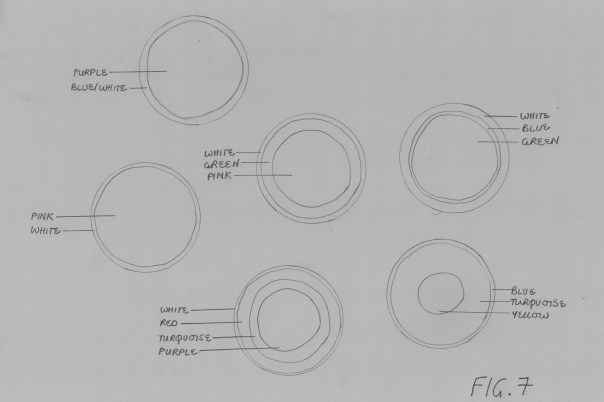
(*here, as you can see, my numerical order for diagrams falls out of place due to necessary rearranging of ideas. Damn.)
7.
I must make a table of solid versus hollow spheres. Here I run into a conundrum of sorts with the definition of hollow/solid. It happened when I looked at the insides of a golf ball (fig.7).
I now realize that a golf ball is a plastic shell containing a rubber inner. I say that a ping pong ball is hollow, but it too is a plastic shell, this time containing an air inner.
A truly hollow sphere would be entirely empty, would contain a void, a nothing. This is the type of sphere that exists geometrically, in a model on a computer, for its sphereness rests solely on its outer, an infinitely thin layer that is stretched across a skeleton of longitudinal and latitudinal lines. As such, this type of sphere can only exist hypothetically, mathematically and thus metaphysically. As with the perfect sphere, so too the truly hollow sphere exists in the realm of ideas. (fig.5)
Happily, Bachelard says the diagrammatic sphere can be discounted:
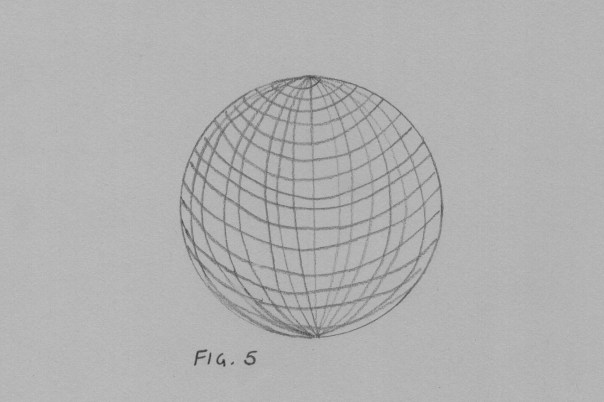
I return again to the golf ball/ping pong ball conundrum. Even though they are both plastic outers, there seems to be a vital difference between the Matter of the respective balls. The different golf balls, spliced, look like diagrams showing cross-sections of planets.
Now a planet is a sphere formed from accretion. It has a vital centre or gravitational locus that matter accumulates around. This is opposed to the formation of a sphere- shell, as with the ping pong ball. I can’t say for certain, but I imagine these are made a lot like Easter eggs: only the outer is made, and the sphere of air contained within occurs as a result: a sphere made from the outside in, much like the geometric model Bachelard so hates. A case where the sphere is wrapped (fig.4)
Whereas a planet is formed from the centre outwards (fig.3). If this planetary type of sphere is the roundness of being, then Being becomes the absolute centre, with all points outwards of equal distance (fig.6).
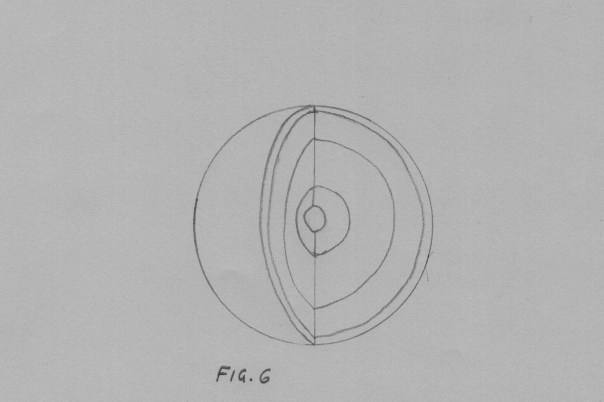
(Fig.6 shows a planet with a gravitational locus at its core)
So my two replacement columns for the imminent table: Spheres that are formed from the outside in (fig.4) Spheres that are formed from the inside out (fig.3)
8.
Where does the golf ball live in the table?
The golf ball could potentially be formed by creating the outer, then injecting the inner. Or it could be made by casting the inner, then coating it with the outer, like icing a cake. I Google it, and it falls into the latter camp, happily affirming my suspicion that golf balls and ping pong balls are ontologically opposed.
However, I then start to become fixated on this rubber ball in the middle. I liken the golf ball to a planet in its formation, in which case the rubber ball, whilst providing the overwhelming majority of the ball’s diameter (fig.7), is its centre (fig.8). But I think of the ball before it has been coated. A perfect, uniform, rubber ball. And how is such a ball made? Answer: it is cast.
A ball that is the same substance throughout seems to be of an entirely different category, being formed neither from the inside out or the outside in, but all at once, every particle being made at the same time. What do you mean, you might say. It is poured into the mould, a process that takes time, and so there is a beginning, with the first bit that is poured. Ah yes, I counter, but it does not become a sphere until the last drop is poured in, before this it is a truncated sphere, until the very last drop, and at this moment the entirety of its form becomes Sphere throughout.
The centre and outer are made simultaneously.
Parmenides:
There is no beginning and there is no end [1]
The sphere is of the same substance throughout, thus all points are equal.
Parmenides:
It is thus complete entirety of continuity [1]
I have decided on a third column for my table:
Spheres that are formed immanently and of the same substance throughout (fig.1)
10.
My table:
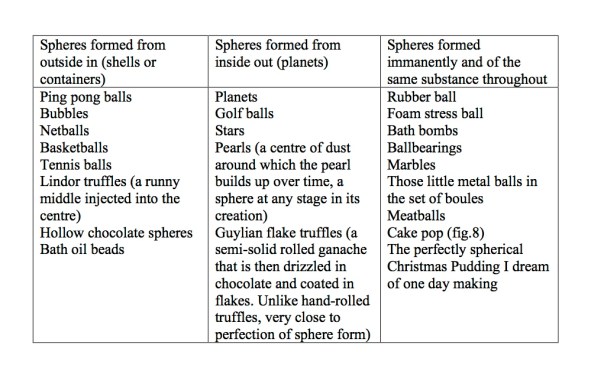
14.
The first two columns contain spheres whose sphere-ness develops in a clear process (fig.3 & 4), and as such these spheres embody being as becoming.
Within the third column are all spheres that can be Being as Existence.
15.
Interiority: Should I be inside the sphere or should the sphere be inside me?
Why does no one built spherical houses? Can you imagine living in a spherical house? I can think of nothing better.
Also, zorbing. A ridiculous outdoor pursuit where you go inside a large, inflatable sphere and roll down a hill. However, the problem is, the sphere is hollow, and with the self inside it, becomes of various layers of human, air, plastic sheeting, compressed air, plastic sheeting (fig.6).
>>I cannot be inside the Sphere so should perhaps be surrounded by the spheres.
16.
Again there comes the question of where I must be in relation to these potential spheres of Being. I must acquire some or all of them in order to answer this question.
>>Perhaps being in a room with all of them, surrounded by them.
>> Save the foam stress ball, though, the lack of tactility may become an issue with somehow engaging with them.
>>I’m not sure how being in proximity to, or holding a rubber ball in my hand is going to get me any closer to an immanent Being.
>>Perhaps a ball pit, but instead of hollow plastic balls, an entire ball pit of foam stress balls. It sounds lovely, but logistically a nightmare, and I have no idea where I would host it.
>>The multiplicity seems to stand against the unity of the Sphere of Existence. I cannot be surrounded by spheres, so the spheres must be inside me.
16.
The Interiority of Ingestion.
Bachelard:
There are 2 ways to get a sphere inside me:
1. surgically
2. by ingestion
The latter is preferable.
17.
A Spherical Dinner Party.
I am going to host a spherical dinner party.
In order to appreciate the vital difference between the ingestion of spheres of being as becoming (columns 1 and 2) versus spheres of Being as Existence I have decided I will serve food from a combination of all three columns. Plus, I can’t think of enough foods to go in the third column.
Garden Peas, Scotch Egg Bites ~
Caviar, Labneh Balls
~~
Spheres of Melon
~
Meatballs, Acini di Pepe, Cherry Tomatoes ~
Arancini Stuffed with Mozzarella Pearls,
Redcurrant and Green Peppercorn Sauce ~
Æbelskiver
Soup of Grapefruit and Bubble Tea
~
Cake pops
Hundreds and Thousands
~
Flowering Tea Spheres
~
Sweetened Coconut Milk
Ferrero Rocher, Lindor Truffles
Some of these food objects formed through a complex process of combination of inside out and outside in that is nonetheless a process of becoming, lead me to believe that a fourth column may need to be added.
Spheres whose process of becoming is a combination of inside out and outside in:
Ferrero Rocher
Arancini
18.
A conundrum of biological growth with regard the forthcoming dinner party
There are, rather, several near-spherical, organic objects whose becoming disturbs me. These spheres come into being, then rot away into non-being, and as such could never be considered in the third column of immanent, permanent spheres. I could maybe ignore them, pretend they are not spheres, but the issue here is that a lot of them would be very good things to serve at the spherical dinner party.
The way that plant-based spheres grow is not so much a case of inside out or outside in, but top-down (fig.9). But then animal spheres, for each individual type of sphere the initial development may differ, although most hold in common that at some stage they develop into a smaller version of their eventual form that they grow into. A new column:
Near-spheres that grow through organic process
Caviar (fig.11)
Cherry Tomatoes
Grapefruit
Navel Oranges Coconuts Redcurrants Peppercorns Peas
Eyeballs (fig.10) (can be eaten, but won’t be eaten at the dinner party)
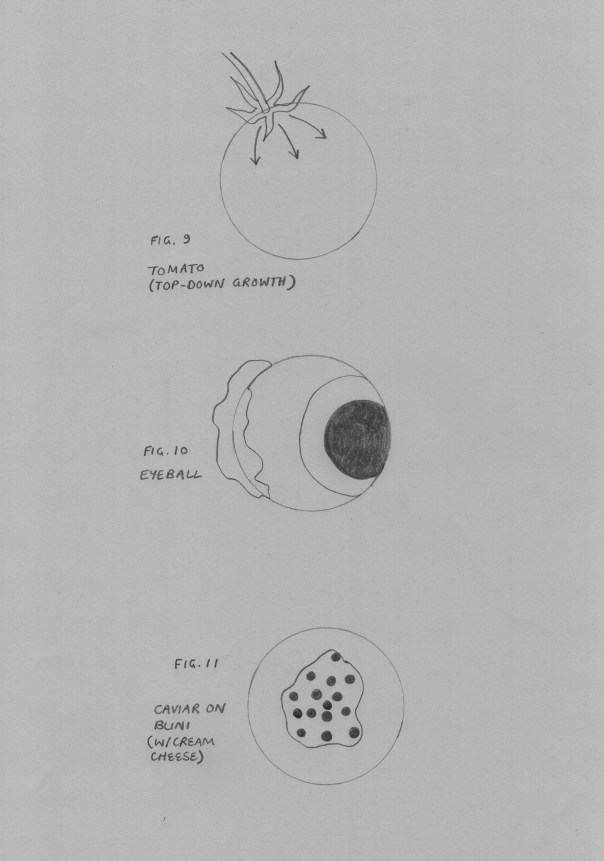
In answer to the question you are thinking but trying to suppress, testicles are edible, but more ovoid.
19.
As there is NO SUCH THING as a perfect sphere save for within the realm of metaphysics, it is difficult to apply a yardstick to at what point a near-sphere ceases to become a sphere at all.
Fig.10 demonstrates that extraction of the eyeball from the socket will undoubtedly be an imperfect procedure leaving traces of socket and other viscera attached. All of the above biological near-spheres are, actually, far too imperfect to be considered spheres at all: they might be ball-shaped, a more general term, but indentations or extrusions interfere far too much to allow potential application of the term spherical.
Meatballs, too: more balls than spheres.
Mozzarella pearls are not formed in the same way as pearls, contrary to their name. A small line around their circumference suggests they are formed through a mould. The line is quite thick, it interrupts their sphere-ness.
The organic near-spheres, the meatballs, the mozzarella pearls: these are all ball- shaped, but not spheres at all.
>>Should I serve them at the dinner party?
I am torn between conceptual ideology and the desire to provide a nice meal.
20.
Isolation.
If I return to my onomatopoeic words that capture a sense of completion. I will repeat it: Completion / Alone / One / Round / Complete / Whole.
Bachelard:
2 points about the above sentence:
1. The spherical dinner party will be an excursus into different sphere formation, yet it will not be an experience of Being. The collectivity of experience necessarily dictates that it cannot ever be the Sphere of Being.
2. Bachelard’s statement further underlines the fundamental necessity of a substance being the same matter throughout. It is a sense that all molecules bind each other together and the gesture of formation is one of collective concentration. Not projection outwards, or wrapping inwards. The molecules hold each other in balance, in stasis, in Existence, in Being. I already know this, I have already argued this, but it is nice to be agreed with.
I am haunted, here, by an image of a pool of water on a leaf. Due to the slight polarity of water molecules, the liquid forms a skein on its surface. So you picture a leaf, with a pool of water on it, a stock image that looks like a screensaver, and the weight of the water gradually drags down enough that a drop begins to form, begins to pull away, and eventually the membrane of the surface breaks and plop, a perfectly spherical drop falls in slow motion through the air.
It is alone.
21.
The Cake Pop.
I have come to the realization that my pursuit of the Sphere of Being may reside in the cake pop. It is the closest foodstuff in my column to a perfect sphere (fig.8).
The sphere is of the same substance throughout, thus all points are equal
Parmenides:
It is thus complete entirety of continuity [1]

I have never been a fan of the whole ridiculous cupcake-then-cake pop phenomenon; in fact I’ve always hated it. I’m pleased that the ridiculous cupcake trend seems to be dying a death now. Yet cake pops are more of a strange phenomenon. They just arrived, one day, a fully-formed stealth trend. They never seem to have reached mainstream popularity, but neither has their presence diminished. They just are, and exist–or persist–in continuity.
Parmenides:
There is no beginning and there is no end [1]
Both the physical object and the concept of the cake pop may embody Being.
22.
Bachelard:

Yet Bachelard’s Poetics of Space was first published (in French) in 1958. He was, alas, almost 60 years too early for the phenomenology of the cake pop. And so I wonder if the following chapter in his album of concrete metaphysics could indeed involve the ingestion of this perfect sphere of baked goods.
>>The experience must be done in private, in isolation, without the distraction of conversation.
>>The engagement with the food sphere must not be a series of bites but ingestion whole.
As the cake sphere is crushed in the mouth, whole, the crust breaking first under the pressure from the roof of the mouth, the initial act of ingestion is at once the beginning of absorption of the sphere and also an act of destruction of the sphere as image, becoming an entirely experiential, interior sphere.
Spherical mouth-feel.
And so I conclude the following:
_______________________________
[1] Parmenides (2007) On the Order of Nature. Translation: Asram Visra. New York: Aurea Vidya.
[2] Bachelard, G. (1964) The Poetics of Space. Translation. Massachusetts: Beacon Press.
[3] Sloterdijk, Peter (2011) Spheres Volume 1: Bubbles. Translation: Wieland Hoban. Los Angeles: Semiotext(e).
More about Rebecca Jagoe’s work here.